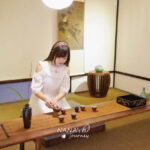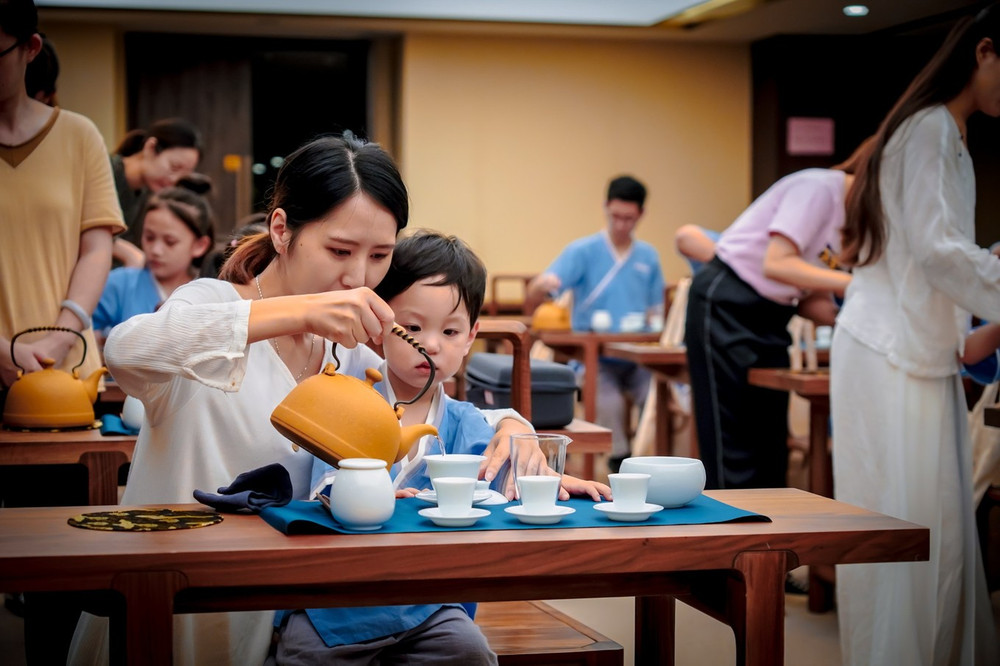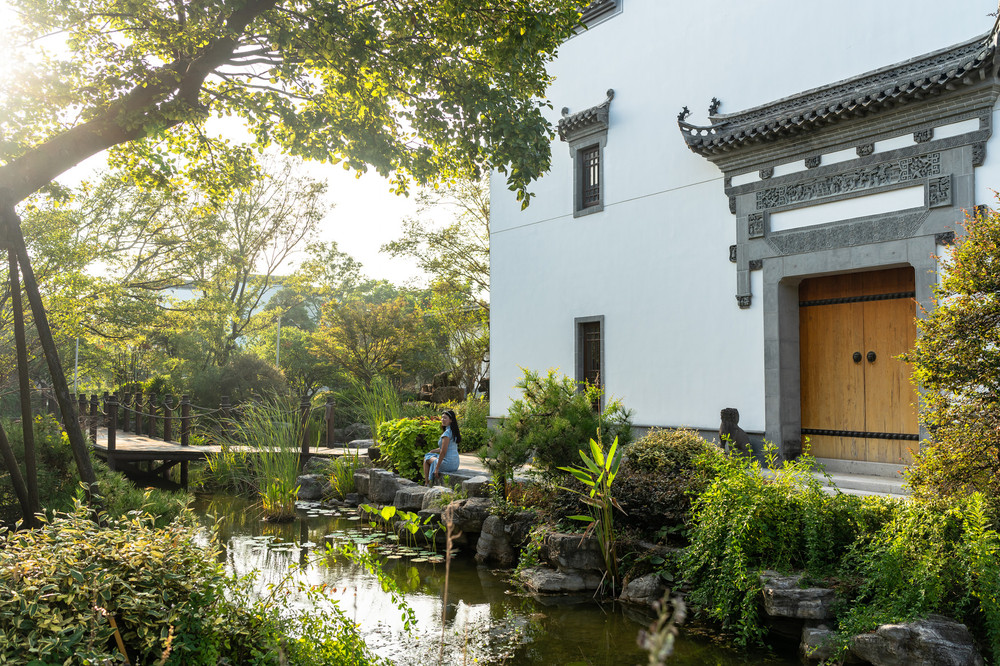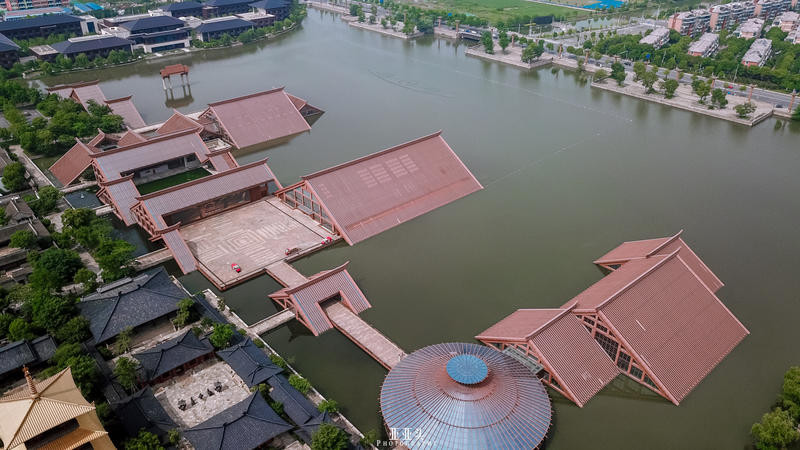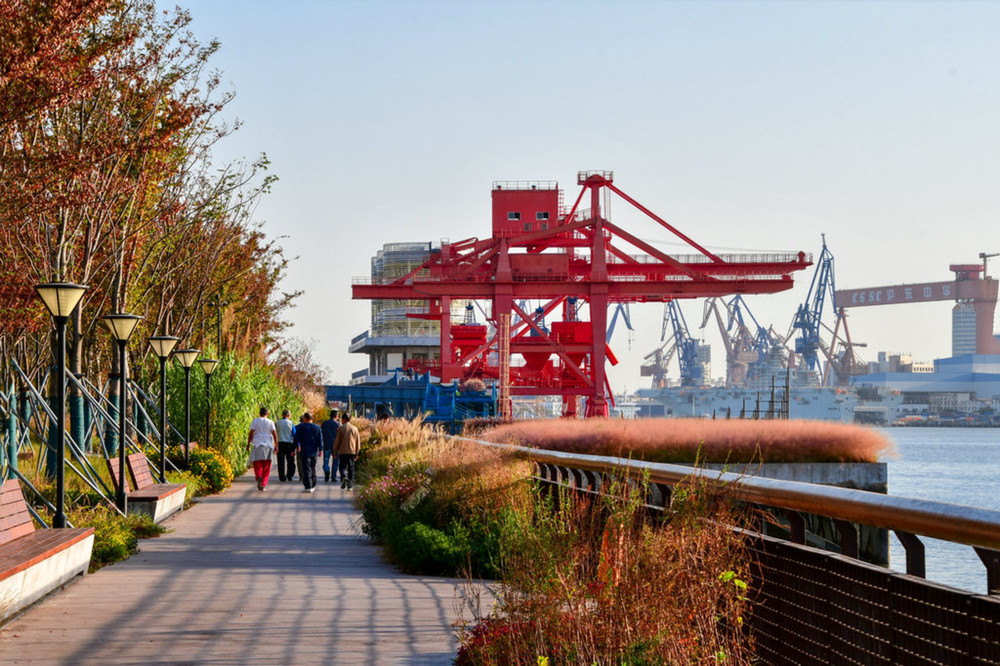Duration: 1 day
Time: July
Cost per person: 200 yuan
Who: Family
Activities: Self-driving, Cultural, Weekend getaway
The author visited these places: Shanghai Dishui Lake, China Maritime Museum, Yangshan Deep Water Port
Published on 2020-07-10 16:05
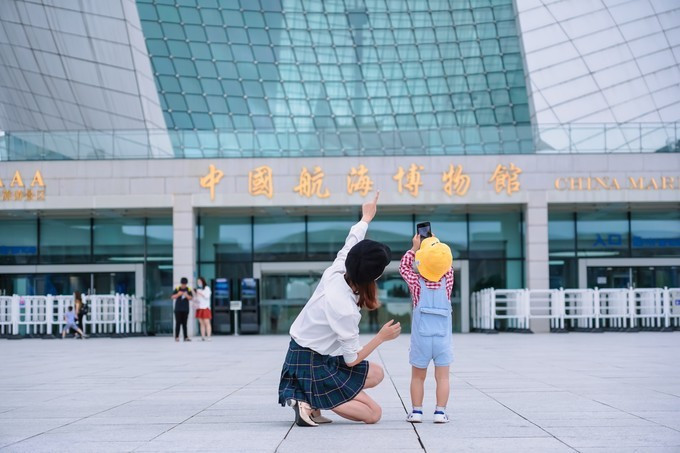
‘When humanity raises the sails of exploration, when dreams ride the waves on the blue ocean, new sea routes connect unfamiliar continents, painting a magnificent tapestry of navigation…’ Every child has a dream of sailing, a curiosity for the unknown world, which is evident even in my 2-year-old baby, constantly asking questions like ‘Why is this? Why is that?’ Since we took him to see the ocean, he has been chattering about the sea, big fish, and large ships… Thus, my husband and I decided to take him to Lingang on a weekend. Not only is there the sea, but more importantly, there is the China Maritime Museum, a place where children can explore the world of navigation.
Since Kai Kai was 8 months old, I have been taking him to various museums. Many parents might think that children are too young to understand the ‘adult world’, but you are truly underestimating the abilities of these little sprites. If you persist, they will surprise you with their knowledge. Museum education must start from a young age, allowing history, science, and culture to enter their field of vision and become a part of their world, never extinguishing their passion for understanding the world.
There are many museums in Shanghai, but when choosing one, it’s important to select one suitable for children with immersive experiences and interactive games. The China Maritime Museum is one of them. It is the largest and highest-level comprehensive maritime museum in the country, covering everything from the history of navigation to maritime knowledge and shipbuilding. It is like a grand feast of sea and sky, and the key is that it has many interactive projects that can make dull knowledge come alive through various operations and interactions, making it perfect for families to explore together.
In the morning, drive to the China Maritime Museum, which is about an hour’s drive from the city. The museum is located in Dishui Lake, Lingang New City, Pudong New Area. As the car enters Lingang City, the vast greenery on both sides and the clean, spacious streets present a tranquil and ecological city scene. ‘See, baby, the Maritime Museum is here!’ The baby, who was dozing off, immediately became spirited, pointing to the white building in the distance, ‘Sailboat!’ Yes, that’s right, this is the China Maritime Museum, a building shaped like two white sails, as if about to set sail into the sea.
The museum officially opens at 9:30 am, and we arrive on time because it is said that the exhibition area of the Maritime Museum covers 21,000 square meters. Considering we are with a child, just walking around will take a lot of time, not to mention the countless artifacts, models, and interactive games. We estimate it will take a whole morning and afternoon to fully explore.
We park the car in the free parking lot inside the museum and hold the baby’s hand, climbing the stairs to the museum entrance. The baby is excited, and a sailing journey is about to begin! (Tip: For those with strollers, it is recommended to use the elevator from the parking lot to the 2nd floor directly.) China Maritime Museum, fulfilling a child’s dream of sailing.
We booked tickets online in advance and made a reservation for the venue through the ‘Shanghai Tourist Code’. It is currently the 10th anniversary of the China Maritime Museum, so even the entrance tickets are 60% off, which is a great value.
Upon entering the Maritime Museum, you’ll find the service center at the entrance, where any questions can be addressed. Adjacent to it is the complimentary luggage storage for tourists visiting from out of town, where you can deposit larger items like suitcases. For parents with young children, the museum offers a thoughtful service: free rental of strollers with only a $200 deposit, sparing you the effort of carrying your child. Behind the service desk lies the exhibition area. Before venturing in, it’s advisable to pick up a map and a visitor’s guide. On both sides of the entrance, you’ll find directional maps and materials for temporary exhibitions. There are two versions of the visitor’s guide: one suitable for adults and another tailored for children, filled with child-friendly content. Besides detailing the layout of the exhibition halls, it also guides children on how to ‘play’ the museum with their parents. The museum also includes a nursing room, located next to the children’s activity center on the first floor.
The exhibition is spread over three floors, with six major halls primarily concentrated on the firstUpon entering the museum, the first thing that catches your eye is the impressive ‘Fu Ship’ located in the atrium. “Mommy, big ship! Big ship!” exclaims a child, and indeed, this can be considered one of the museum’s prized exhibits. Standing close to the nearly 30-meter-tall wooden ‘Fu Ship,’ one cannot help but be awestruck. Although not the largest ship of its time, it is a very typical example of a Fu Ship, with a pointed bow, wide stern, upturned ends, and a high prow and stern, easily recognizable at a glance. The Fu Ship is one of the famous ‘Four Ancient Ships’ of ancient China and is a general term for the pointed-bottom ocean-going vessels along the coast of Fujian and Zhejiang. The ship here is a replica, but its craftsmanship is not to be underestimated. It is a full-scale, hand-built ship that can actually sail, so calling it a prized exhibit is not an exaggeration.
Descending from the second floor to the first via the escalator, we prepare to start our tour from the first floor. “Mommy, those are eyes!” a child points to the decorations on the Fu Ship and calls them eyes. Well… they do look quite similar. “Great job, little friend,” the guide continues the story: “In the ocean, there’s a saying that big fish eat little fish. In ancient times, ships often capsized, so an old man thought it was because little fish were attacking our ships. So, if we paint two eyes on the ship, the little fish will think we are a huge fish and won’t dare to attack us.” So it is… really ‘eyes’! The guide’s alternative explanation helped Kai Kai understand the significance of ‘ship eyes’ and also showed us the ancient people’s attention to detail in the construction of the ‘Fu Ship.’ It’s not just a ship; it reflects the unique customs and habits of that region at the time. The ancestors believed that ships also have spirit. Different ships require different ‘ship eyes,’ also known as ‘dragon eyes.’ Ships with ‘eyes’ looking down are fishing boats, signifying concentration on fishing; those with ‘eyes’ looking forward are merchant ships, signifying knowledge of the route, which is quite profound.
During the pandemic, only 10 people are allowed on board at a time, necessitating a queue to enter. It’s worth the wait to bring your child to see this ‘giant’ from ancient times. Soon, it’s our turn. Ascending the staircase, we reach the main deck of the ship to closely observe the shipbuilding craftsmanship from the pinnacle of ancient Chinese navigation. There’s a cockpit on the deck with a shrine dedicated to the Sea Goddess Mazu, ensuring a smooth journey. The child is also brimming with curiosity about the great ship, exploring the deck and feeling the imprints left by history.
After visiting the Fu Ship, we officially begin our visit at the first exhibition hall, the Maritime History Hall. Located on the east side of the first floor, the hall showcases the invention and evolution of Chinese navigation technology through ancient, modern, and contemporary exhibits. Here, both adults and children can systematically understand the invention and evolution of Chinese navigation technology. Upon entering the history hall, the evolution of ships is the first thing we see, from gourds and animal skins, using buoyancy to cross rivers, to dugout canoes, and then to wooden plank ships. The models of what the child has seen in books are now before their eyes, filled with longing. In the history hall, it’s essential to mention the ‘Map of the Ming Dynasty’ and Zheng He’s voyages to the Western Seas. The ‘Map of the Ming Dynasty’ was drawn based on Zheng He’s navigation experiences. Zheng He was a famous navigator during the Ming Dynasty. He led more than 200 ships to over 30 countries in South Asia and East Africa, and drew this ‘Map of the Ming Dynasty’. Whether it’s the scale of the fleet, navigation technology, or international influence, it was the best in the world at the time. In the ancient Chinese ship model exhibition area, there are dozens of exquisite ship models in the collection, which make us marvel at the superb shipbuilding skills and leading navigation technology of our ancient ancestors. Crossing the ancient exhibition area and entering the modern exhibition area, the twists and turns in the development and achievements of China’s modern navigation events and industry become the main content here. When children visit museums, they are always influenced by the museum’s atmosphere. The usually noisy child also becomes quiet, exploring the various ‘strange’ new things in front of them.
Leaving the history hall and entering the ship hall, the ship hall is divided into two parts: ship structure and equipment, and shipbuilding. The large 1:6 high-fidelity cross-sectional model of a ten-thousand-ton freighter in front of us makes the display of ship structure clearer and easier to understand. There is a 270-degree curved screen theater in the communication hall to learn about modern shipbuilding.Due to limited flow, most of the time, you need to wait in line. You can choose to come over lunchtime when there are relatively fewer people. The sailor hall behind is rooted in life and close to life, so it is more popular with children. This is a highly interactive exhibition hall. In addition to the objects reflecting the work and life of sailors, there are also staff explaining navigation knowledge and skills. In the sailor hall, you can also experience the feeling of being a captain by operating the navigation simulator in the hall. The undulating sea surface on the screen gives a feeling of being in the ocean. If you can control the navigation device by hand, the experience must be even better! The various sailor knots hanging on the wall used to be learnable here, but they have been suspended due to the pandemic.
The Maritime Lifestyle Festival initially seemed to be a letdown due to the pandemic, with most interactive experiences like the 4D cinema, planetarium, and children’s activity center closed. Fortunately, surprises are always in store at the Maritime Museum! During our visit, we coincided with the Maritime Lifestyle Festival, which instantly energized our tired child, Kai Kai. Once inside, he was unwilling to leave. The festival is a highlight of the China Maritime Museum’s summer schedule, attracting many children each year with its engaging interactive experiences. This year, coinciding with the museum’s tenth anniversary, the event was particularly lively. The exhibition ran from July 4th to July 10th, with a closure on Monday, July 6th, so visitors should not miss out. Upon entering, remember to pick up a pass card at the entrance, detailing various game projects related to maritime content. Each completed game earns a stamp, with about a dozen available, but collecting six is enough to exchange for small gifts and enter a lottery. My son and I were so eager to complete the games and win prizes that we forgot to commemorate our pass card. The festival offers numerous activities, including DIY drift bottles and boats that foster children’s hands-on abilities, allowing them to create and take home their creations as souvenirs. The children become quietly focused on their work, with staff guiding them gently and engaging in play. There are also immersive experiences like Popeye, maritime maze exploration, and a mini-maritime triathlon, all of which delight the children. Although Kai Kai didn’t become a junior captain in the seafarer’s hall, he discovered an electric boat that travels through water, which was incredibly cool. He grabbed the remote control and began to maneuver the boat, a fascinating experience for a young boy. At regular intervals, besides the lottery activities, there are interactive performances on stage with children, leading them in singing and dancing. Kai Kai was so engrossed that it took some convincing to get him out for lunch. The museum has a restaurant on the first floor where we had our midday meal. After a satisfying meal, we unexpectedly found a temporary exhibition showcasing the story of Shanghai and the sea. The museum often hosts various temporary exhibitions, adding extra highlights to the six main exhibition areas. Speaking of old Shanghai, it has countless connections with the sea. Over 7500 years ago, most of Shanghai was still an ocean, with silt from the Yangtze River accumulating along the coast, extending the land towards the sea. After thousands of years of coastal changes, we have the modern face of Shanghai. Familiar landmarks like the Shiliupu dock, Shanghai’s opening as a port, and the city’s harbor, along with rickshaws and cheongsams, are all products of Shanghai’s unique charm, setting the exhibition apart with a distinct flavor. As a Shanghai native, I have a deep emotional connection to these exhibits. Although they are imports, they integrated many Chinese elements during that era. Seeing these exhibits is like witnessing the vibrant old Shanghai.
In the central hall on the first floor, there is also a model of a warship aircraft carrier. This is also a must-pass place for going up and down stairs. The most famous one is China’s first aircraft carrier, Liaoning. Due to the vividness of the model, both adults and children will stop here for a long time to witness the elegance of the great power’s navy. We have visited the first floor thoroughly. Take the escalator and continue to visit the exhibition hall on the second floor. The second floor mainly contains some modern maritime knowledge, including the Maritime and Port Museum, the Maritime Affairs and Maritime Safety Museum, the Military Navigation Museum, 4D dynamic cinema and planetarium. The Maritime and Port Museum constructs a real port scene with small models. People who have been to Yangshan Deepwater Port will be quite familiar with this scene. Here are also displayed technical materials such as the marine environment, various instruments and meters that have guaranteed ship navigation since ancient times, as well as a large number of cultural relics and objects reflecting ports and waterways.The globe in front is very eye-catching to children. This is the earth we live on. It has a diameter of two meters. On the globe, we can intuitively see that the ocean is so vast, accounting for about 71% of the earth’s area.
Continuing to walk forward, in front is the Military Navigation Museum, which is divided into two exhibition contents: navy construction and warship knowledge. Men are really very interested in this part of the content. Various large-scale warship models made by professional naval model units can’t help but sigh at the rapid development and strength of China.
The Maritime Sports Museum is located on the east side of the second floor of the exhibition hall. Exhibits here include physical objects of maritime sports and physical objects donated by Olympic champions and famous sailors.
The Maritime Affairs and Maritime Safety Museum is located on the west side of the second floor of the exhibition hall and consists of two independent exhibition areas: maritime affairs and maritime safety.
If there is spare time, you can also take your baby to visit the hydrophilic platform. The scenery outside is great. If you are a careful person, you will also find that the lighthouse outdoors and the one in the exhibition hall are almost replicated except for their sizes, which is very interesting.
Practical information
Address: No. 197 Shengang Avenue, Lingang New City, Pudong New District, Shanghai, near Dishui Lake.
After July 1, 2020, the ticket price has been adjusted: adults are reduced to 30 yuan/person; college, high school and primary school students with student ID cards are 15 yuan/person; elderly people aged 60 to 69 with valid certificates are 10 yuan/person; elderly people over 70 can visit for free. Children aged 6 and below or children with a height of 1.4 meters (including 1.4m) (must be accompanied by parents) can visit for free.
Opening hours: 9:30-16:00 (entry stops at 15:30); closed on Mondays, except holidays.
Transportation information
Bus lines: Longgang Express Line (Shengang Avenue Station, Sanhu West Third Road), Sangang Special Line (Shengang Avenue Station, Sanhu West Third Road), Shengang Line 1 (Shengang Avenue Station, Sanhu West Second Road), Shengang Line 3 (Shengang Avenue Station, Sanhu West Third Road).
Subway line: Take Metro Line 16 and get off at Dishui Lake Station. Then take Shengang Line 1 inner loop (take 2 stops) and get off at Shengang Avenue Station, Sanhu West Second Road.
Self-driving route: Outer Ring Road S20 (Pudong Airport direction) → transfer to S2 Expressway (Donghai Bridge direction) → Exit at Dishui Lake to China Maritime Museum.
